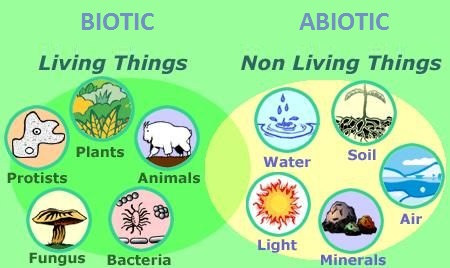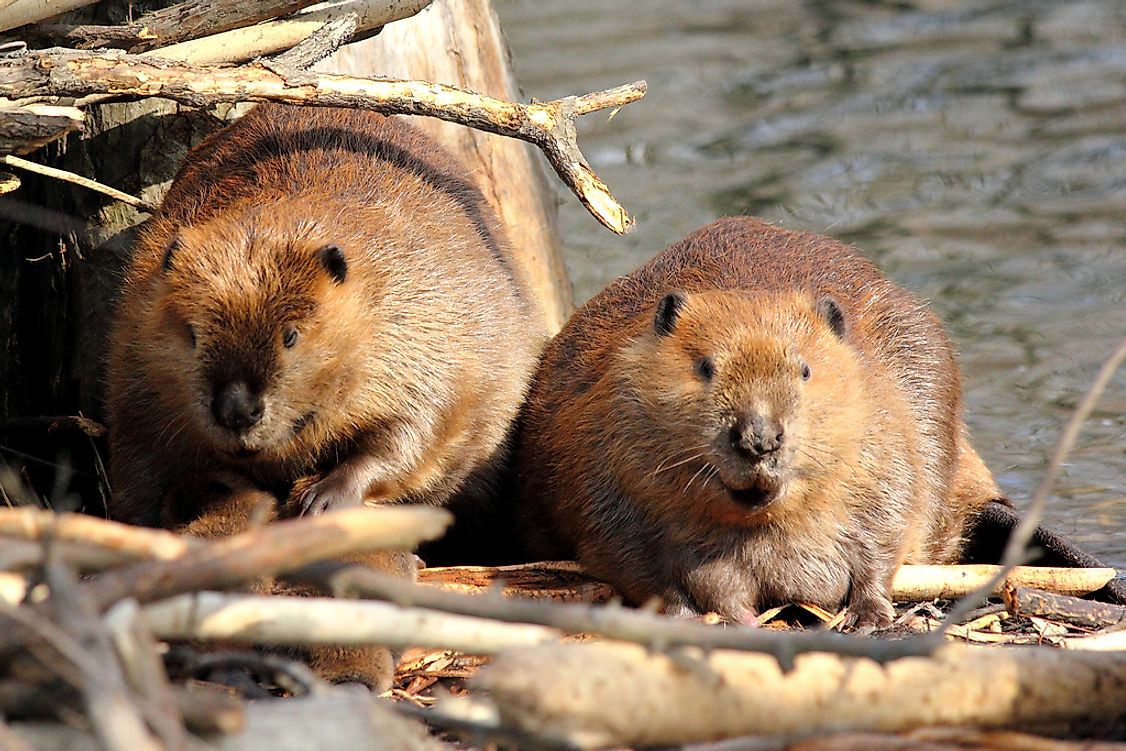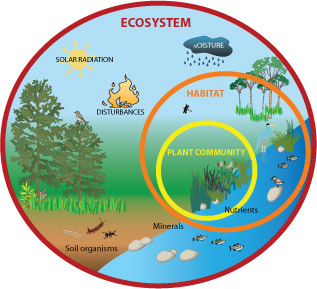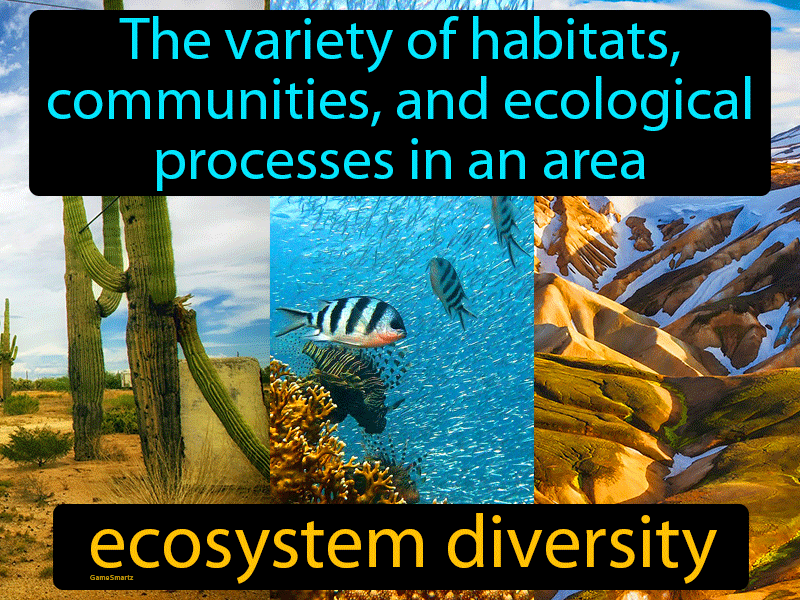Topic what is an ecosystem biotic and abiotic: Explore the intricate balance of living and non-living elements defining ecosystems, and discover the vital role each plays in sustaining life on Earth.
Table of Content
- What are the components that make up an ecosystem and differentiate between biotic and abiotic factors?
- Understanding Ecosystems: An Overview
- Defining Biotic Factors: The Living Elements
- Exploring Abiotic Factors: The Non-Living Elements
- Interactions Between Biotic and Abiotic Factors
- Examples of Ecosystems: From Deserts to Rainforests
- The Role of Energy Flow in Ecosystems
- YOUTUBE: Understanding Ecosystems: Populations, Communities, Abiotic and Biotic Factors
- Impact of Human Activities on Ecosystems
- Conservation Efforts: Protecting Our Ecosystems
What are the components that make up an ecosystem and differentiate between biotic and abiotic factors?
An ecosystem is made up of both biotic and abiotic components. Biotic factors refer to the living organisms within an ecosystem, while abiotic factors are the non-living components that also play a crucial role in the ecosystem\'s functioning. Here is a breakdown of the components that make up an ecosystem and the differences between biotic and abiotic factors:
- Biotic Factors:
- Living organisms such as plants, animals, fungi, and microorganisms.
- Interactions between different species, including predation, competition, and mutualism.
- The food web and the flow of energy within the ecosystem.
- The biodiversity and species richness of the ecosystem.
- Abiotic Factors:
- Non-living components like sunlight, water, temperature, soil, air, rocks, and minerals.
- Physical factors that influence the ecosystem, such as climate, topography, and natural disasters.
- The availability of resources like nutrients and space.
- The overall environmental conditions that affect the survival and distribution of living organisms.
It is the interaction between biotic and abiotic factors that shapes the characteristics of an ecosystem and determines its stability and resilience. Understanding the balance between these components is essential for effective ecosystem management and conservation.
READ MORE:
Understanding Ecosystems: An Overview
An ecosystem is a dynamic complex of plant, animal, and microorganism communities and the nonliving environment, interacting as a functional unit. This intricate network is sustained by the continuous flow of energy and the cycling of materials through living (biotic) and nonliving (abiotic) components.
- Biotic Components: These are the living elements of an ecosystem, including all plants, animals, fungi, and microorganisms. They interact with each other and their physical environment, contributing to the flow of energy and materials.
- Abiotic Components: These encompass all nonliving elements like sunlight, water, air, minerals, and climate conditions. They provide the essential conditions for life and influence the survival and growth of biotic components.
Ecosystems can vary greatly in size and can be as large as a desert or as small as a puddle. The balance and interaction between biotic and abiotic components allow ecosystems to function and support life. Understanding these interactions is crucial for the conservation and sustainable management of natural resources.

Defining Biotic Factors: The Living Elements
Biotic factors encompass all living components of an ecosystem. They play a crucial role in maintaining the balance and health of their environments. These factors include a diverse range of organisms, each contributing uniquely to their ecosystems.
- Flora: Plants form the primary producers in most ecosystems, converting sunlight into energy through photosynthesis, which serves as the foundation of food webs.
- Fauna: Animals, ranging from herbivores that feed on plants to apex predators at the top of the food chain, contribute to the dynamic balance of ecosystems through various interactions.
- Microorganisms: Bacteria, fungi, and other microscopic organisms play vital roles in nutrient cycling and decomposition, facilitating the recycling of organic matter.
These living components are interconnected, with each species playing a specific role, from pollinators like bees that aid in plant reproduction to decomposers that break down dead matter, returning nutrients to the soil. Understanding biotic factors is essential for conserving biodiversity and ecosystem health.
Exploring Abiotic Factors: The Non-Living Elements
Abiotic factors are the non-living components that shape ecosystems. They create the foundational environment in which living organisms thrive, influencing their growth, behavior, and survival.
- Climate: Encompasses temperature, humidity, and wind patterns, significantly affecting ecosystem dynamics and species distribution.
- Water: Essential for life, water availability affects the types of organisms that can inhabit an ecosystem, influencing their physiological processes and ecosystem structure.
- Soil and Geology: Soil composition and geological features determine the types of plants that can grow, which in turn supports various animal species.
- Light: Solar energy drives photosynthesis in plants, setting the primary productivity of an ecosystem and influencing the diurnal and seasonal behaviors of organisms.
- Atmospheric Gases: The composition of the atmosphere, including oxygen, carbon dioxide, and nitrogen, is critical for life processes such as respiration and photosynthesis.
Understanding these abiotic elements is crucial for studying ecosystems, as they directly affect the distribution, abundance, and health of biotic factors within an environment.

Interactions Between Biotic and Abiotic Factors
The interplay between biotic and abiotic factors is fundamental to the structure and function of ecosystems. These interactions influence the distribution, abundance, and diversity of organisms within an ecosystem, shaping its overall health and sustainability.
- Photosynthesis and Light: Sunlight, an abiotic factor, is essential for photosynthesis in plants, the primary producers in ecosystems. This process not only supports the energy needs of plants but also forms the base of the food web, supporting herbivores and, subsequently, higher trophic levels.
- Soil Nutrients and Plant Growth: The availability of nutrients in the soil, such as nitrogen and phosphorus, affects the types of plants that can grow in an ecosystem, influencing the entire biotic community dependent on those plants.
- Water Availability and Organism Survival: Water, a critical abiotic factor, influences the survival of all living organisms. The distribution of species, their reproductive strategies, and their daily activities often revolve around water availability.
- Temperature Regulation and Metabolism: Temperature affects the metabolic rates of organisms. Warm-blooded animals regulate their body temperature against varying external temperatures, impacting their energy expenditure and food requirements.
- Climate Change Impacts: Changes in abiotic factors such as temperature and precipitation patterns due to climate change can lead to shifts in ecosystems, altering species distribution, and challenging the survival of certain biotic components.
These dynamic interactions highlight the delicate balance within ecosystems, where a change in one element can ripple through the entire system, underscoring the importance of understanding and preserving this balance for ecosystem health and stability.
Examples of Ecosystems: From Deserts to Rainforests
Ecosystems are diverse and complex, ranging from arid deserts to lush rainforests, each with unique interactions between biotic and abiotic factors. Here are some examples:
- Deserts: Characterized by low rainfall and extreme temperatures, deserts have specialized plants like cacti and animals such as snakes and lizards adapted to the arid conditions.
- Forests: Forests, including tropical, temperate, and boreal forests, are rich in biodiversity. They feature a wide range of plant and animal life, with trees forming the primary structure of the ecosystem.
- Grasslands: Found in regions with more moderate rainfall, grasslands are dominated by grasses and are home to many large herbivores, as well as predators that depend on them.
- Aquatic Ecosystems: These include freshwater environments like lakes and rivers, and marine ecosystems like oceans and coral reefs, each supporting diverse life forms adapted to water conditions.
- Tundra: Characterized by cold temperatures and minimal vegetation, the tundra is home to hardy species adapted to extreme conditions, such as mosses, lichens, and migratory birds.
Each ecosystem type showcases a unique set of interactions between its biotic and abiotic components, demonstrating the adaptability and diversity of life on Earth.

The Role of Energy Flow in Ecosystems
Energy flow is a fundamental process in ecosystems, driving the interactions between biotic and abiotic components. It is essential for the survival of organisms and the functioning of the ecosystem as a whole.
- Photosynthesis: The primary step in the flow of energy, where plants convert solar energy into chemical energy in the form of glucose, which serves as food for themselves and other organisms.
- Consumption: Herbivores consume plants, transferring energy to themselves. Carnivores and omnivores further transfer this energy by consuming herbivores and other animals.
- Decomposition: Decomposers break down dead organic matter, releasing nutrients back into the soil, which are then used by plants, thus continuing the cycle of energy flow.
This cycle of energy flow illustrates the intricate connections between biotic and abiotic factors, demonstrating how ecosystems sustain themselves through continuous exchanges of energy and matter.
Understanding Ecosystems: Populations, Communities, Abiotic and Biotic Factors
Ecosystem: \"Discover the beauty and importance of our delicate ecosystem in this fascinating video. Explore the interconnectedness of living organisms and their environment, showcasing the wonders of nature at its best!\" Factors: \"Uncover the key factors that shape our world in this intriguing video. From environmental influences to personal choices, gain insights into the diverse elements that impact our daily lives significantly.\"
Exploring Ecosystems: Biotic and Abiotic Factors
Get it Now: ...
Impact of Human Activities on Ecosystems
Human activities have profound impacts on ecosystems, affecting both biotic and abiotic components. These impacts can alter ecosystem structure and function, leading to changes in biodiversity and ecosystem services.
- Land Use Change: Deforestation, urbanization, and agriculture alter habitats, reducing biodiversity and disrupting ecosystems.
- Pollution: Air, water, and soil pollution can degrade ecosystem health, affecting wildlife and plant life and disrupting natural processes.
- Climate Change: Emissions of greenhouse gases lead to global warming, affecting ecosystems through changes in temperature, precipitation patterns, and sea levels.
- Overexploitation: Overfishing, hunting, and harvesting at unsustainable rates can deplete species, affecting food webs and ecosystem balance.
- Invasive Species: Introduction of non-native species can outcompete native species, leading to loss of biodiversity and alteration of ecosystem functions.
Understanding and mitigating the impact of human activities on ecosystems is crucial for preserving biodiversity and ensuring the sustainability of ecosystem services for future generations.

READ MORE:
Conservation Efforts: Protecting Our Ecosystems
Conservation efforts are crucial in safeguarding our ecosystems from degradation and ensuring the sustainability of both biotic and abiotic components for future generations. These efforts involve a range of strategies and actions aimed at preserving natural habitats, restoring damaged ecosystems, and promoting biodiversity.
- Protected Areas: Establishing national parks, wildlife reserves, and marine sanctuaries to protect natural habitats and provide safe havens for wildlife.
- Restoration Projects: Rehabilitating degraded ecosystems, such as reforestation projects and wetland restoration, to revive biodiversity and ecosystem functions.
- Sustainable Practices: Encouraging sustainable agriculture, forestry, and fishing practices to minimize environmental impact and ensure resource renewal.
- Legislation and Policies: Implementing environmental laws and regulations to reduce pollution, limit harmful activities, and manage natural resources responsibly.
- Community Engagement: Involving local communities in conservation initiatives, recognizing their traditional knowledge and promoting stewardship of natural resources.
Through concerted global and local efforts, we can protect and restore ecosystems, ensuring they continue to thrive and support life on Earth.
Understanding the delicate balance of biotic and abiotic elements in ecosystems is key to preserving our planet"s biodiversity and ensuring a sustainable future for all life forms.











